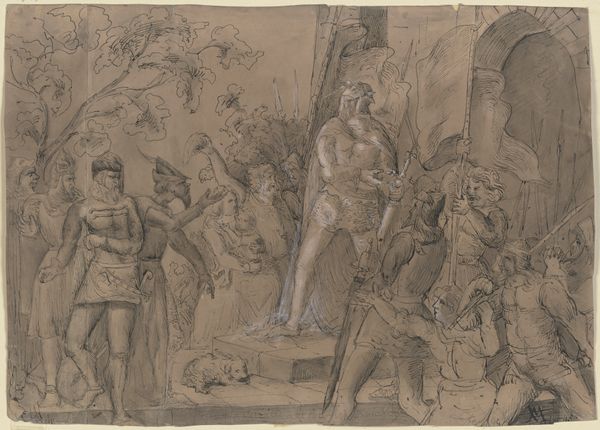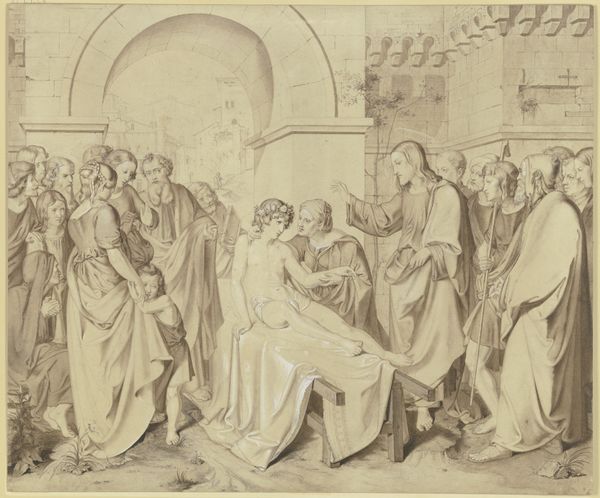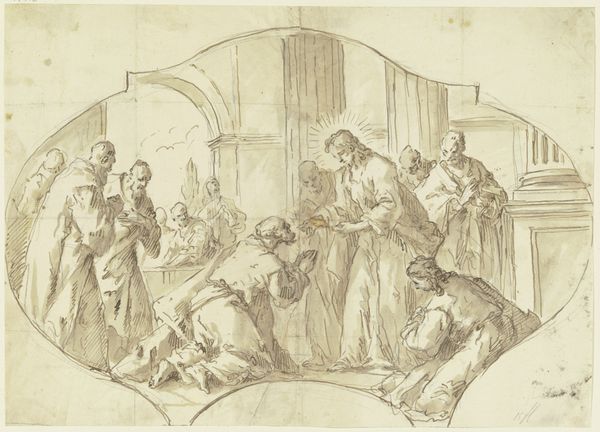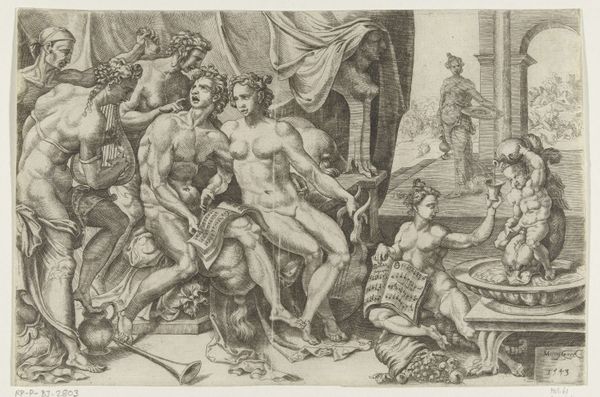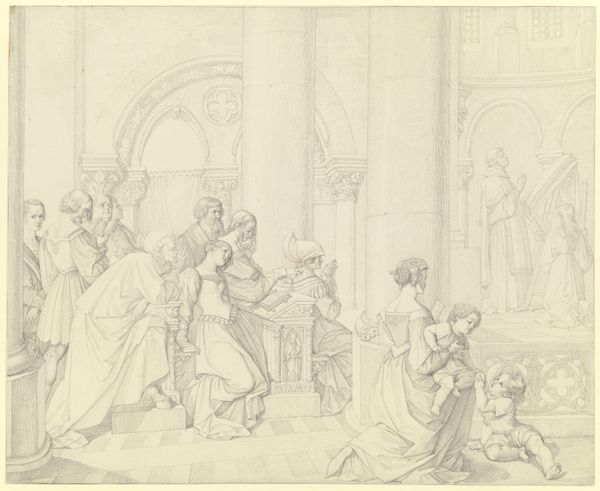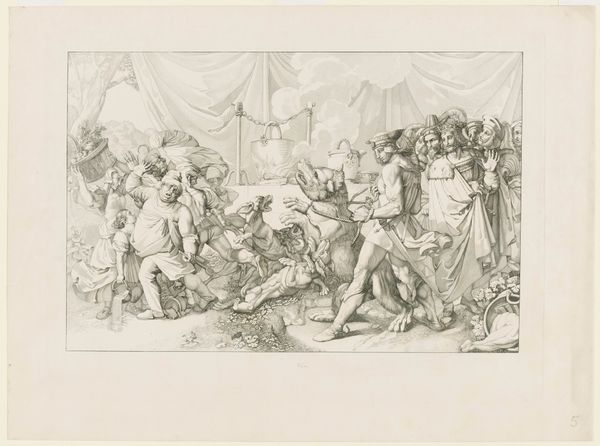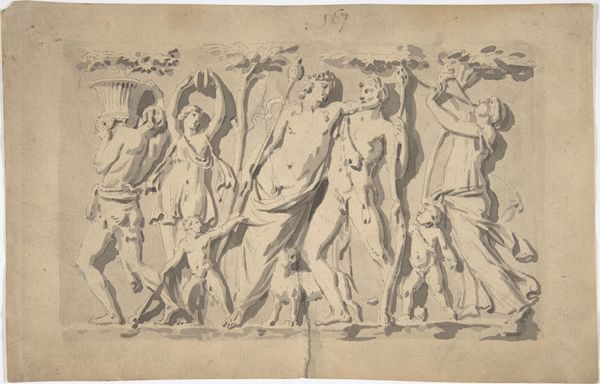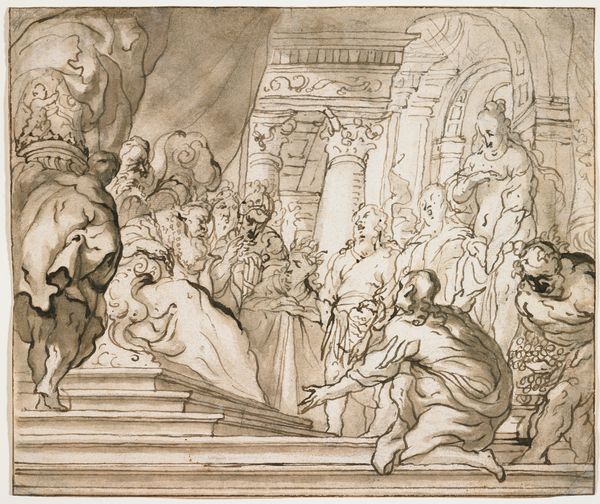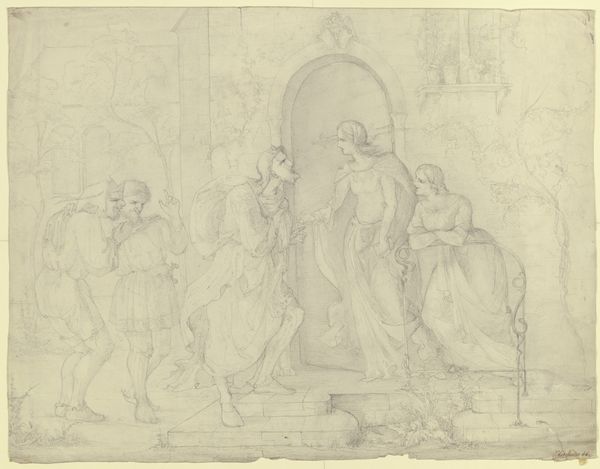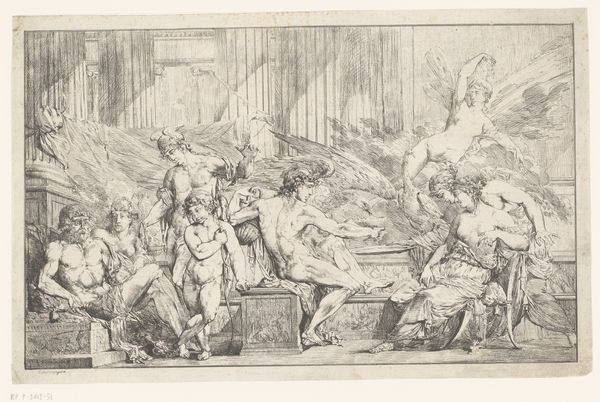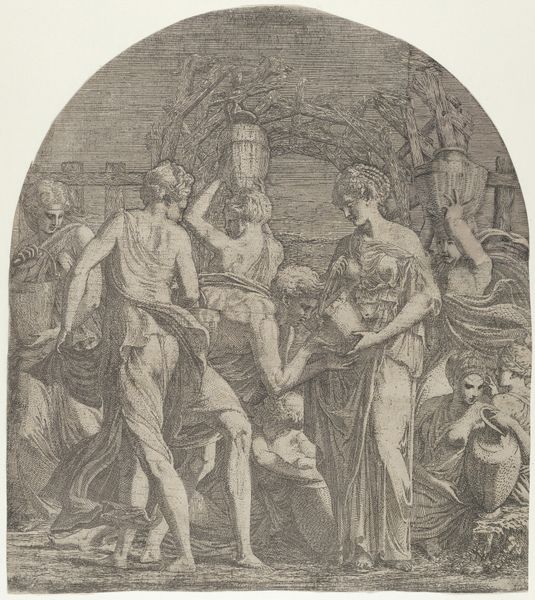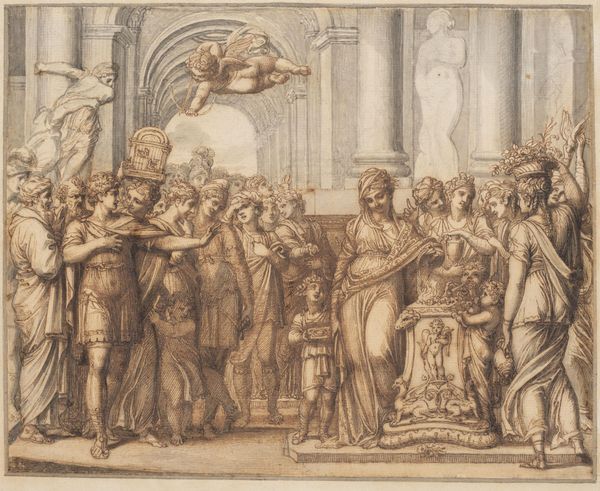
drawing, pencil
#
drawing
#
medieval
#
figuration
#
pencil
#
genre-painting
#
history-painting
#
academic-art
Copyright: Public Domain: Artvee
Curator: What first strikes me about this pencil drawing by Anton Romako, titled "Singers’ Contest on the Wartburg," is the way the graphite seems to shimmer, giving the scene an almost ethereal quality. It dates from around 1853 and it shows the Singers' Contest at Wartburg Castle, an event from German history and legend. Editor: The materiality of it intrigues me— the smudged textures suggesting constant reworking. I can almost see Romako's hand at work here, obsessively detailing and refining. What's interesting to me is how much labor and technique, all of that intensive academic artistry, went into producing an image meant to celebrate a medieval event. Curator: It’s very much an academic piece, isn't it? Grounded in historical painting and referencing a moment steeped in symbolism for German national identity. The Wartburg, for centuries, represented a nexus of cultural and political significance, linking German speakers through traditions of music and storytelling. Romako clearly sees this event as monumental, emphasizing its import through his composition and the way his figures dominate the space. Editor: Do they, though? To me, they feel more like spectral presences, made from dust as much as deliberate strokes. I almost want to consider Romako’s use of readily available materials in his own era - a simple pencil- against a desire to present us with, as you said, a historical subject with huge symbolic importance. You could easily consider how a “humble” material such as the pencil drawing, relates to the humble social status of folk legends that it attempts to commemorate and canonize, for instance. Curator: The almost translucent figures give the scene a mythical feel. It’s like a tableau of ancestral memory where material and immaterial intermix to recall this pivotal, idealized past. Look how the details emerge from the light, a stylistic gesture suggesting these moments exist outside our everyday awareness. They still resonate for a reason. Romako aims to awaken a collective spirit through symbols. Editor: But whose spirit? By fixing that ancestral memory through painstaking, polished details, I can't help but wonder how such artworks manufacture our national and cultural identity. It begs questions of class, authorship, labor, consumption of material, which, ultimately, produce a particular, mediated idea. It all leaves me slightly uneasy. Curator: It's unsettling, sure, but the visual legacy and complex layering of signifiers offer an intriguing case for understanding the construction of memory and culture within German Romanticism. Editor: Right. I am now considering a future where that kind of image, and the mode of its production, becomes outdated as technologies advance to preserve new "memories".
Comments
No comments
Be the first to comment and join the conversation on the ultimate creative platform.

